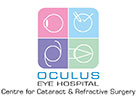Since about 20 years ophthalmic surgeons all over the world prefer phacoemulsification with foldable intraocular lens (IOL) implantation for almost all types of cataracts. Among the foldable IOL’s however, there are many choices that confuse patients. This is an attempt to explain the differences.
 HYDROPHILIC/HYDROPHOBIC:
HYDROPHILIC/HYDROPHOBIC:
This refers to the material of the lenses and the main difference is that hydrophobic lenses cause less “posterior capsule opacification “(PCO). PCO is the opacification of the capsule of the natural lens on which the artificial IOL rests. If it happens you will have reduced vision again sometime after the cataract surgery and we need to make a hole in the capsule with Yag laser. Hydrophobic lenses avoid this problem.
ASPHERIC:
Aspheric lenses have a modified curvature of the lens which increases the sharpness of vision to some extent. It has this advantage only if all the other structures in your eye like your cornea, macula, etc., are normal.
ULTRAVIOLET:
Some lenses have an ultraviolet filter that prevents ultraviolet light from reaching your retina and is supposed to prevent macular degeneration. But they also reduce contrast in some cases and your doctor will advise if they are right for you.
TORIC:
These lenses have recently become available. Until now we were able to reduce only your spherical glasses number when we did your cataract surgery but now we can reduce the cylindrical number also and this greatly increases the clarity of vision. So they are recommended for all patients with cylindrical numbers along with a cataract.
 MONOFOCAL:
MONOFOCAL:
Our eyes slowly lose the power to focus for different distances after the age of 40 and that is why those who have never had glasses need plus number reading glasses after the age of 40. Those who also have distance glasses need bifocal or progressive glasses. This condition is called presbyopia.
With mono-focal lenses, this condition remains after cataract surgery and you will have absolutely clear vision at one particular distance, either distance or near. We can choose the power of your IOL to adjust a different residual number in the two eyes after the surgery and this can solve the problem to some extent. But you will have to wear glasses for reading.
MULTIFOCAL:
Those who want to see at all distances without glasses can opt for multifocal lenses. Technology has improved a lot in recent years and there are many good multifocal IOL’s available.This option involves some compromise. These lenses reduce contrast and you may need brighter light to read at night. Some patients may have glare for bright lights. Some patients need to wear glasses occasionally. However, when patients understand these limitations and opt for these lenses, they are very happy to be free of glasses most of the time. It is a great convenience to be less dependent on glasses as people age.
